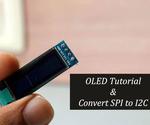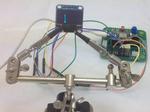Other

“In this tutorial, we are going to learn about OLED displays. Which can be very easily interfaced with Arduino and can display important parameters for your project, and see how to convert these screens from SPI to I2C, So let …

“This tutorial will show you the integration of Rotilio Maker (link) wifi version (Particle Photon CPU on board) with an OLED SPI display and how to work with it using the SparkFun Micro OLED Library in order to visualize data …

